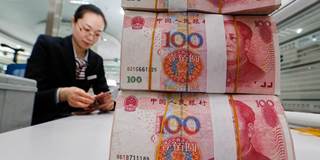In 2015-2016, the People's Bank of China drained some $1 trillion from China’s foreign-exchange reserves intervening to prop up the falling currency. As the renminbi again begins to depreciate, Chinese policymakers should recall this experience and avoid similarly costly – and futile – interventions.
BEIJING – China’s currency has started falling again. The last major depreciation of the Chinese renminbi began in the second half of 2015, triggered by a surge in capital outflows. Despite repeated interventions by the People’s Bank of China (PBOC), markets remained frenzied for more than a year. The currency’s value fell to nearly CN¥7 per US dollar, before stabilizing in early 2017.

BEIJING – China’s currency has started falling again. The last major depreciation of the Chinese renminbi began in the second half of 2015, triggered by a surge in capital outflows. Despite repeated interventions by the People’s Bank of China (PBOC), markets remained frenzied for more than a year. The currency’s value fell to nearly CN¥7 per US dollar, before stabilizing in early 2017.